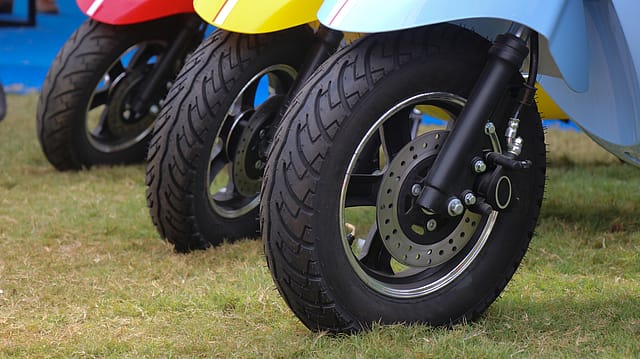Electric two-wheeler sales rise in May
ADVERTISEMENT

Electric two-wheeler registrations improved in May after a sharp decline in April when the subsidy cut came into effect.
Ola Electric, the country's largest electric scooter maker, clocked 37,225 registrations in May, a 9% rise over the previous month when incentives were slashed to ₹10,000 per vehicle, as per Vahan data. Ola retailed 53,522 e-scooters in March 2024 ahead of the expiry of the Faster Adoption and Manufacturing of Electric Vehicles (FAME-II) scheme.
The Centre introduced the ₹500-crore Electric Mobility Promotion Scheme (EMPS) from April this year to support 3,72,215 EVs including 3,33,387 electric two-wheelers.
While Ola continued its dominance in the EV two-wheeler segment with 49% market share in May, TVS Motor Company, India's second-largest electric two-wheeler maker, recorded 11,790 EV registrations in May, a 52% jump over the previous month when it retailed 7,742 EVs.
Bajaj Auto retailed 9,214 electric scooters in May compared with 7,555 in April while Ather Energy saw 6,045 vehicle registrations in May, up 47% over the previous month.
This comes after E2W registrations hit a low of 65,111 in April from a high of 1,39,531 in March before the subsidy was slashed under the new EMPS scheme. The subsidy cut led to a spike in sales in March as customers rushed to buy E2Ws at cheaper prices.
December 2025
The annual Fortune 500 India list, the definitive compendium of corporate performance, is out. This year, the cumulative revenue of the Fortune 500 India companies has breached $2 trillion for the first time. Plus, find out which are the Best B-schools in India.
"It’s sad to see the dip in sales post the subsidy change. However, it has not totally died down. So people have gotten used to it and are coming back and the buying is still happening," says Anshul Gupta, managing director of Okaya EV. The company launched its first electric motorcycle ‘Disruptor’ - priced at ₹1.6 lakh - under a new brand Ferrato last month.
While government incentives are an important factor, electric two-wheeler sales are likely to keep increasing over time as companies expand their product portfolio, says Natarajan Sankar, Managing Director and Partner at Boston Consulting Group (BCG).
“Different customers require different types of EV offerings. Three years ago, OEMs had only one product with the exception of low speed two-wheelers. Today multiple companies have expanded their portfolio to offer multiple EV products," says Sankar.
Ola Electric and TVS Motor Company have recently launched affordable e-scooter variants with smaller battery configurations to cater to the mass segment. Ather Energy, which forayed into the electric two-wheeler market with its performance scooter, launched its family scooter, the Rizta, in April.
“As more product offerings meet the distinct needs of customers, we will see the market unlock. There are still many unmet needs in many of these segments,” Sankar says.
BCG, however, expects 30-40% EV penetration in two-wheelers by the end of the decade. Government's policy think tank NITI Aayog has set a 100% target for 2030.
TVS Motor Company expects electric vehicles to contribute 20-25% of its total volumes in the next three years from 5% currently.
On the reduction in subsidy, Okaya's Gupta says EV prices for customers cannot keep increasing. "EMPS is good right now. But when it ends we don’t know what’s going to happen. With or without subsidy, we have to learn how to keep our balance forward, what we can do with our product mix offerings, optimise our costs in manufacturing and delivery because the customer price cannot keep increasing. It’s a tough challenge but it is doable," says Gupta.
